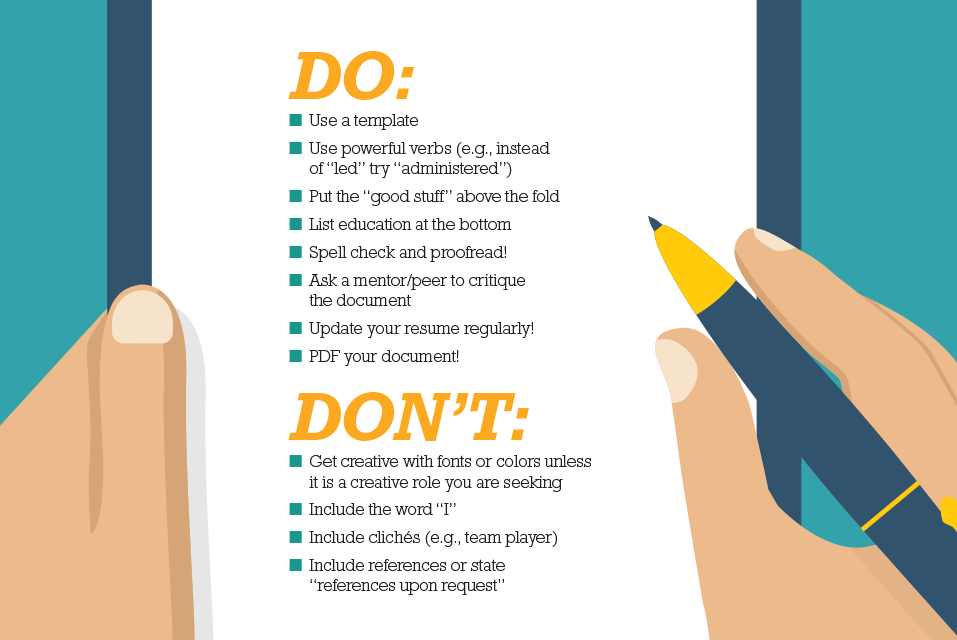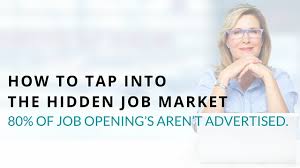Your choice of resume content will be influenced largely by your job target, your background, your strengths, and your weaknesses. It should also take into account human rights legislation and what you needn’t include — such as age, race, religion, marital status. There are no strict rules. Choose what will most effectively sell you to an employer.
Remember: your purpose is to get screened into an interview. Here are some do’s and don’ts:
1. Don’t supply information that might screen you out. Don’t draw attention to your weaknesses. You only invite rejection doing so.
2. Do include your name, address (with postal code), email and phone numbers (both home and cellular). For purposes of confidentiality, you may prefer they not contact you at your current job. If so, give a day phone number where to leave messages for you. Interviews in Canada are usually set up by phone during office hours.
3. Following the name, address and phone number, a chronological resume would go on to list education and employment backgrounds, not necessarily in that order. The area you are strongest or which might be more appealing to the employer should come first.
Caution: if the company has indicated a preference for a degree or a credential that you don’t have, you would not want to start with your education. Job-seekers who wish to show off a hard-earned but possibly unrelated academic credential have cut themselves off from jobs they wanted by using this approach.
4. Analyze the job ad and consider what the employer is seeking. If you have the required skills and knowledge but lack the specific academic credential asked for, don’t be deterred from applying. If you present what you do have, lack of a specific credential may not be a barrier.
5. Be honest. Be truthful in what you include and use judgment about what you should withhold. For example, if you only have Grade 10, and the employer is asking for high school, don’t mention your education. Or, near the end of your resume, list: Education: High School, Rimbey, 1981
SPECIAL CIRCUMSTANCES
Some particular circumstances perceived as barriers to getting the job you want. Here are some strategies for overcoming them:
Limited Education
As employers seek more and more academic qualifications, the lack of a high school diploma is a barrier to overcome. If you have an extensive employment background and have demonstrated a range of skills, list your employment experience first. Place education later in the resume or not at all. If you have a post-secondary credential of any kind, it is not necessary to reveal the last year of high school you completed. There is no point in drawing attention to a weakness.
You may choose to use headings called “Education” where you list your formal education and “Professional Development,” where you list workshops and seminars you’ve taken.
Uncompleted Post-Secondary Education
You may lose an opportunity by describing post-secondary education simply as a course, e.g. “Marketing — N.A.I.T. — 1992.” Marketing is a credit course in the N.A.I.T. Business Administration diploma program, so list it that way: “N.A.I.T. — Business Administration Diploma Program — 1992.”, which signals that you’re in the process of getting a post-secondary credential.
Unrelated Education or Experience
If you don’t have the actual degree, diploma or experience asked for, state what you do have, emphasizing the similarity. If you have out-of-province or out-of-country credentials, show how they resemble the Alberta or Canadian equivalent. Don’t list all your post-secondary credentials if doing so might eliminate you from competition for an entry-level position because you are overqualified. Post-secondary education is a rapidly growing business, and there are a proliferation of certificates, diplomas, and degrees. The ones that are most familiar because of their longevity are necessarily the best. The onus is on you to sell the employer on the suitability or advantages of your credentials.
Unrelated Work Experience
Professional Background
Fundraising
| 1995 – Present | Contemporary Ballet Co. Special Projects Coordinator |
|
|
| 1988 – 1997 | United Way Petroleum Industry sector Special Projects Coordinator |
|
|
| EMPLOYMENT OR PROFESSIONAL EXPERIENCE | |
| 1997 – Present | Zork’s Petroleum Corporation Special Projects Superintendent |
|
|
|
1975 – 1997 |
Petroleum XYX Corporation Special Projects Coordinator |
|
Out of the Workforce for Extended Periods
Even if you have been out of the workforce, you may have a volunteer or other life experience that is relevant. Instead of “Employment Background,” a heading, use “Professional Background” and describe your responsibilities with agency names and dates.
Most Relevant Experience is Not Current
A systems analyst who has been managing project teams may want to return to hands-on consulting and design work. Or an office worker may wish to go back to customer service after several years away from that aspect of the business. A way to bring related experience from the past to the foreground would be to include a Summary or Profile Overview or Professional Highlights section at the top of the resume listing several bullets of transferable and relevant skills to lead the reader immediately to some identifiable transferable skills and past experiences. Some examples of the bullets in this section might be:
|
Another approach would be to list “Most Relevant Professional Background” first and then “Other Professional Background.” If you let the reader know right up front that you have what they’re looking for, they’ll seek and find further evidence as they read your resume.
Terminated From Your Last Job
There are a few ways you can handle this.
You are likely to be more desirable if you’re employed. Don’t show months, only years, which will hide any employment gaps.
In this economy, there are many possibilities: merger, temporary position, project work, reorganization, downsizing, business failure, etc. If you are providing the dates, include a one-line explanation in your resume in brackets or the covering letter of the “temporary project.”
The tough one is “termination due to performance.” Announcing this would undoubtedly result in rejection. Leave your explanation for the interview.
Extended Sick Leave
Extended sick leave does not require commentary in the resume. But you should be prepared to address it in the interview.
Personal Data
Human rights legislation protects you from having to reveal your age, gender, marital status, number of dependants, religion, nationality or ethnic background. Don’t supply this information unless you feel it will enhance your competitiveness.
Possible Gender Discrimination
The same holds for a female candidate in a traditionally male-dominated field. Some progressive organizations are looking for qualified female candidates to enhance their management, professional and technical teams. Some employers have targets for increasing the representation of women, natives, members of other cultures and disabled on their staff. In approaching such an employer, if you are a member of one or more of these target groups it would be wise to let them know, which is best done subtly in your covering letter. For example:
| “In addition to meeting your requirements of having considerable customer service experience, I have an undergraduate degree in economics earned in my native country, Nigeria.” | |||||
Possible Age Discrimination
Don’t reveal your age unless you feel it will be an advantage. Even if your high school or university graduation year shows your age, don’t eliminate the dates from your formal education. The prospective employer could reject you for incomplete information.
Visible Minority
It ‘s hard to give general tips here. Get advice from a person you respect who understands Canadian employer expectations. For example, a newer Canadian might, because of language differences, reveal spelling or grammar deficiencies in the resume or cover letter. You can correct these by getting feedback from an expert.
When listing a foreign credential, get an authority such as the educational coordinating council at a university to evaluate your transcripts and provide a written summary of equivalency showing what the Canadian or provincial equivalent would be. Include this with your resume or tell the employer you’ll supply it in the interview.
Overqualified
Unfortunately, many employers have a great fear of hiring people who are overqualified. The myth persists that if you have more education or employment background than required:
|
|
You have choices, but consider them carefully:
Choosing a Format There is no single right way to format a resume. But some ways are more effective than others. Readability should be your prime consideration. It is easier to understand information quickly when presented in short lines or columns. Material written in a narrative style across the full width of a page takes longer to read. DO
DON’T |
|||
|
|||
| © Wordscapes® (David Turner). All Rights Reserved. |




